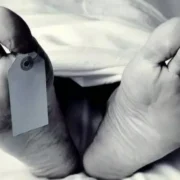Home Safety Tips For Parents Of Little Children

Kafayat Olawale
Growing up for little children is all about exploring their environment. The home is a favourite place for this adventure and full expression of self. Home is where children feel most comfortable and loved, but the home is also the most common place for young children to be injured, making home injuries a leading source of accidental deaths for children.
Fortunately, most home injuries are quite predictable and can be avoided through education and prevention. Parents can take proactive steps to make the home environment as safe as possible before the baby arrives and again before they start crawling.
READ ALSO: What To Do If Your Child Has a Fit Or Convulsion
But even when you think you have removed all the home safety hazards, the reality is that children can still have injuries by some means. That’s why supervision is one of the keys to home safety for kids.
Also, as your child grows and learns to climb and open things, you need to be alert for new hazards, and you may need to re-organise your home environment to make sure your home is still a safe and creative place to play and explore.
Along with supervision and a safe environment, you can also improve home safety by teaching your child about what’s safe and what’s not.
Common Types Of Home Injuries:
- Falls
- Burns
- Poisonings
- Suffocation and Choking
- Drowning
- Inadequate railings and banisters
- Unsafe storage of medications
Falls
Falls are the most common cause of injuries and visits to hospital in every age group for children. Use the tips below for your child’s safety
- Never leave a child alone around stairs.
- Install safety guards across entries to stairs and balconies.
- Always supervise your child on stairs and balconies, even if you have guards.
- Leave a hall light on at night, or keep a torch close by for older children to get to the toilet without tripping.
READ ALSO: 8 Reasons Not To Give Your Child Fizzy Drinks
Burns And Scalds
To protect your children from suffering burns and scalds, you should
- keep hot drinks completely out of reach of children.
- Use your electric kettle and other heating devices on elevated surfaces in appropriate parts of the home
- Restrict your child’s movement around the kitchen area and make them aware its a dangerous part of the home.
Poisoning
Poisoning is one of the leading causes of injury to little children. Children are prone to putting just about any material lying about in their mouth and are often poisoned by common household chemicals and medicines. You can make your child’s environment safer by:
- Organising your home and keeping poisons in a secure cabinet.
- Storing medicines up high in a locked cupboard or cabinet.
- Putting a child-safety latch on the doors of cupboards where you keep household poisons.
Strangulation And Suffocation
Many homes typically have everyday items that could strangle or suffocate a child. These items include soft toys and bedding, blinds, cords and ropes, plastic bags and packaging. Keep your child safe, using these tips:
- Keep all plastic bags away from children.
- Put away toys, cushions and piles of clothing, and basically avoid littering.
- Wrap blinds cords in cleats attached to the wall at least 1.6 m above the floor.
READ ALSO: Why Parents Should Not Be Too Quick To Give Children Ibuprofen Or Paracetamol – Expert Warns
Other Safety Tips
- Get a licensed electrician to do any repairs.
- Replace electrical appliances and cords if they’re worn.
- Use power point covers.
- keep all glassware out of reach of children.
- Don’t keep loose rugs on the floor.
- Clean up any spills around the home right away.
- Apply non skid strips to the bottoms of bathtubs.
- If your child has started to ride a bike, make sure he or she wears a helmet.
- Never leave your child around water unattended.


